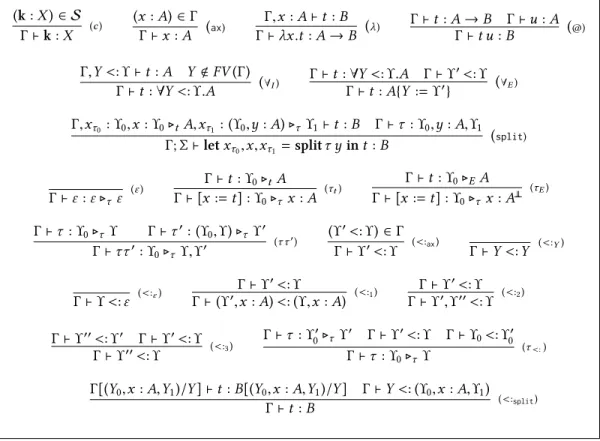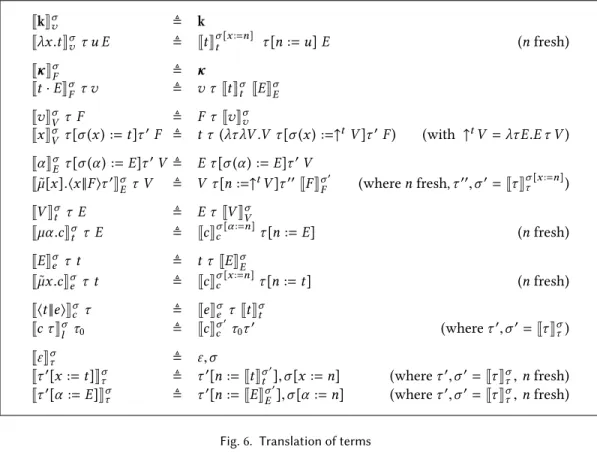Normalization and continuation-passing-style interpretation of simply-typed call-by-need λ-calculus with control
Texte intégral
Figure
![Fig. 2. Reduction rules of the λ [ lvτ⋆ ] -calculus](https://thumb-eu.123doks.com/thumbv2/123doknet/14667493.555990/7.729.73.674.129.257/fig-reduction-rules-λ-lvτ-calculus.webp)
![Fig. 3. Typing rules of the λ [ lvτ ⋆ ] -calculus](https://thumb-eu.123doks.com/thumbv2/123doknet/14667493.555990/8.729.67.673.128.419/fig-typing-rules-λ-lvτ-calculus.webp)


Documents relatifs
In this paper, we propose a simple interpretation of the most standard focused presentation of MELL, showing how the structure of focused proofs can be described by refined
Surprisingly, the known criteria for the representation of the call-by-name λ-calculus (with explicit substitutions) fail to characterize the fragment encoding the
Stop considering anything can be applied to anything A function and its argument have different
Hence since the birth of functional programming there have been several theoretical studies on extensions of the λ-calculus in order to account for basic algebra (see for
The strong normalization theorem of second order classical natural deduction [20] is based on a lemma known as the correctness result, which stipulates that each term is in
If we stay at depth 2 in EAλ , there is no way of avoiding the second fact (one can always truncate the σ i to exponential-free types), so if we want to retrieve a larger
This follows immediately from the strong normalization of the calculus of substitution (i.e. all the rules except b) which is proved in [4]2. We have stated the previous lemma in
Since the proofs in the implicative propositional classical logic can be coded by Parigot’s λµ-terms and the cut elimination corresponds to the λµ-reduction, the result can be seen as

![Fig. 7. Typing rules for the λ [ lvτ ⋆ ] -calculus with De Bruijn](https://thumb-eu.123doks.com/thumbv2/123doknet/14667493.555990/22.729.71.674.130.433/fig-typing-rules-λ-lvτ-calculus-bruijn.webp)


